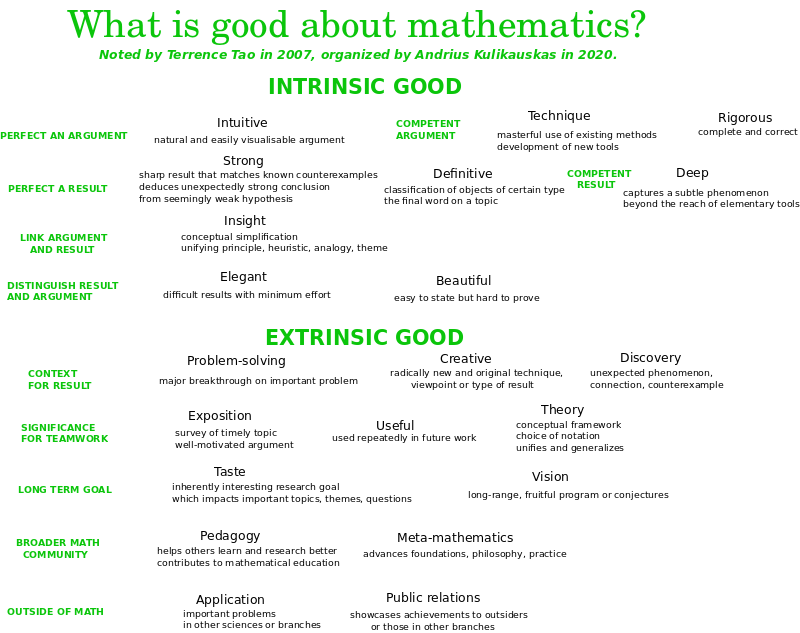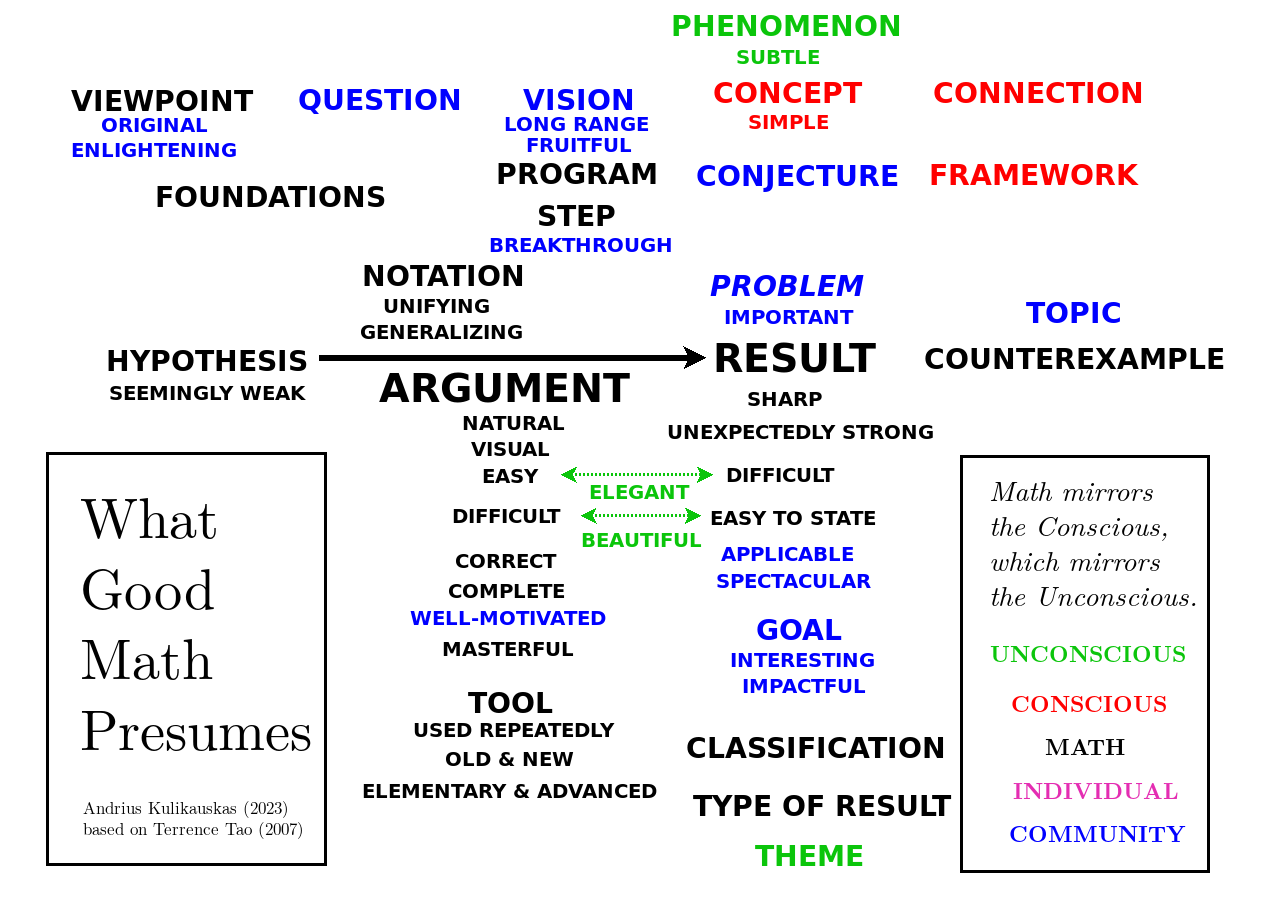- MathNotebook
- MathConcepts
- StudyMath
- Geometry
- Logic
- Bott periodicity
- CategoryTheory
- FieldWithOneElement
- MathDiscovery
- Math Connections
Epistemology
- m a t h 4 w i s d o m - g m a i l
- +370 607 27 665
- My work is in the Public Domain for all to share freely.
- 读物 书 影片 维基百科
Introduction E9F5FC
Questions FFFFC0
Software

Terrence Tao: Meanings of Good Math
- (i) Good mathematical problem-solving (e.g. a major breakthrough on an important mathematical problem)
- (ii) Good mathematical technique (e.g. a masterful use of existing methods, or the development of new tools)
- (iii) Good mathematical theory (e.g. a conceptual framework or choice of notation which systematically unifies and generalises an existing body of results)
- (iv) Good mathematical insight (e.g. a major conceptual simplification, or the realisation of a unifying principle, heuristic, analogy, or theme)
- (v) Good mathematical discovery (e.g. the revelation of an unexpected and intriguing new mathematical phenomenon, connection, or counterexample)
- (vi) Good mathematical application (e.g. to important problems in physics, engineering, computer science, statistics, etc., or from one field of mathematics to another)
- (vii) Good mathematical exposition (e.g. a detailed and informative survey on a timely mathematical topic, or a clear and well-motivated argument)
- (viii) Good mathematical pedagogy (e.g. a lecture or writing style which enables others to learn and do mathematics more effectively, or contributions to mathematical education)
- (ix) Good mathematical vision (e.g. a long-range and fruitful program or set of conjectures);
- (x) Good mathematical taste (e.g. a research goal which is inherently interesting and impacts important topics, themes, or questions)
- (xi) Good mathematical public relations (e.g. an effective showcasing of a mathematical achievement to non-mathematicians, or from one field of mathematics to another)
- (xii) Good meta-mathematics (e.g. advances in the foundations, philosophy, history, scholarship, or practice of mathematics);
- (xiii) Rigorous mathematics (with all details correctly and carefully given in full)
- (xiv) Beautiful mathematics (e.g. the amazing identities of Ramanujan; results which are easy (and pretty) to state but not to prove)
- (xv) Elegant mathematics (e.g. Paul Erdos’ concept of “proofs from the Book”; achieving a difficult result with a minimum of effort)
- (xvi) Creative mathematics (e.g. a radically new and original technique, viewpoint, or species of result)
- (xvii) Useful mathematics (e.g. a lemma or method which will be used repeatedly in future work on the subject)
- (xviii) Strong mathematics (e.g. a sharp result that matches the known counterexamples, or a result which deduces an unexpectedly strong conclusion from a seemingly weak hypothesis)
- (xix) Deep mathematics (e.g. a result which is manifestly non-trivial, for instance by capturing a subtle phenomenon beyond the reach of more elementary tools)
- (xx) Intuitive mathematics (e.g. an argument which is natural and easily visualisable)
- (xxi) Definitive mathematics (e.g. a classification of all objects of a certain type; the final word on a mathematical topic)
- (xxii) etc., etc.

Terrence Tao refers to a variety of concepts that reflect what mathematics presumes. I organized them in the diagram above so that I could better imagine how mathematics unfolds. Apparently, mathematics mirrors the conceptual language of the conscious, which itself mirrors the unconscious. But this diagram does not relate to how math is discovered, the ways of figuring things out. Instead, it describes the complementary question of how mathematics unfolds.
